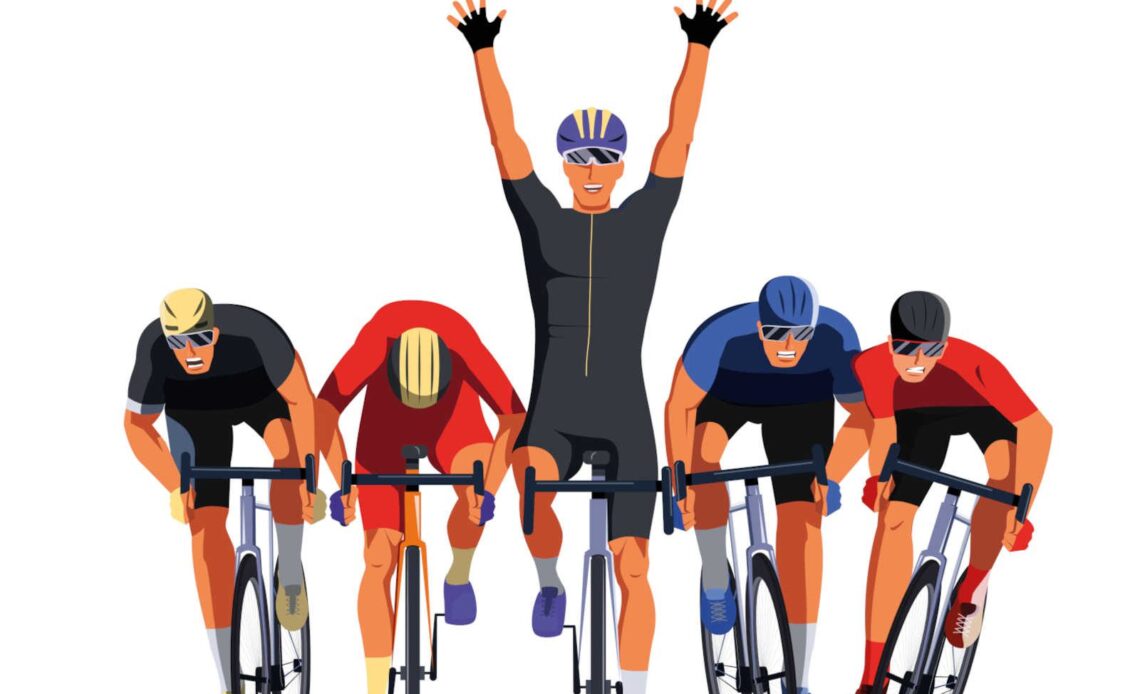So close! If you crave local legend status by taking the sprint at the end of the group ride, you you know it feels. Beating your buds for bragging rights is everything on those weekend rips. If you haven’t quite taken your first town sign sprint, then maybe you need to work on it.
Here are five exercises you can work into your workout routine to try and get there. Good luck!
1. Interval sprints
Begin with interval sprints to build anaerobic capacity and explosive power. Choose a stretch of road or track with minimal traffic and sprint at maximum effort for 20-30 seconds, then recover with easy pedaling for 2-3 minutes. Repeat this process for 5-8 intervals, gradually increasing intensity and duration as fitness improves.
2. High cadence sprints
Practice sprints at a high cadence to improve leg turnover and neuromuscular coordination. Start with a moderate gear and gradually increase cadence while maintaining smooth pedal strokes. Aim for 100-120 revolutions per minute (RPM) during sprints of 15-20 seconds. Focus on generating power throughout the entire pedal stroke, from the downstroke to the upstroke.
3. Standing sprints
Incorporate standing sprints to develop strength and stability while sprinting out of the saddle. Shift to a harder gear and rise from the saddle, keeping the bike steady with a controlled upper body. Drive the pedals forcefully with each leg, using the arms to maintain balance and leverage.
The absolute worst person on a group ride: The Euro training-camp bro
Practice standing sprints for 15-20 seconds, gradually increasing intensity as proficiency improves.
4. Group simulation sprints
Mimic race scenarios by practicing sprints within a group or with a training partner. Rotate positions within the group and take turns leading out sprints from various positions, such as the front, middle, or back of the pack. Focus on positioning, timing, and tactical awareness to maximize efficiency and effectiveness during group sprints.
5.Recovery and adaptation
Allow adequate recovery between sprinting drills to prevent overtraining and promote adaptation. Incorporate rest days into your training schedule and alternate sprint-focused sessions with endurance rides and recovery rides. Listen to your body and adjust intensity and volume accordingly to avoid burnout and injury.
Click Here to Read the Full Original Article at Canadian Cycling Magazine…

